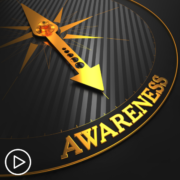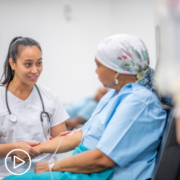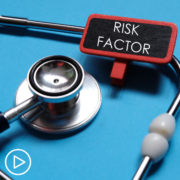Endometrial Cancer Care | Key Barriers and Solutions
Endometrial Cancer Care | Key Barriers and Solutions from Patient Empowerment Network on Vimeo.
What are key endometrial cancer care barriers and solutions? Experts Dr. Charlotte Gamble from MedStar Washington Hospital and Dr. Radhika Gogoi from Karmanos Cancer Institute discuss endometrial cancer incidence, disparities for Black women, symptoms to raise awareness about, and solutions to reduce disparity gaps.
See More from EPEP Endometrial Cancer
Related Resources:

Dr. Charlotte Gamble: Why Is It Important for You to Empower Patients? |

|

Endometrial Cancer Disparities | Elevating Awareness of Diagnosis and Access Gaps |
Transcript:
Dr. Nicole Rochester:
I want to start by just framing the current situation. Black women are twice as likely to die from endometrial cancer when compared to their white women counterparts. There is no current screening test for endometrial cancer, and diagnosis is usually made after patients present with symptoms. Sadly, the list doesn’t end there. So I’m going to start with you, Dr. Gogoi. What are the primary barriers to accessing specialized care for endometrial cancer that you’ve observed in your practice and perhaps in others?
Dr. Radhika Gogoi:
So thank you for that question. I guess I just want to start by just level setting a little bit and talking about specifically endometrial cancer disparities. So unlike other gynecologic cancers, which actually have been shown to be decreasing in incidence, endometrial cancer is actually one of the cancers that is increasing. We know that low grade endometrial cancers really have an excellent prognosis, but higher grade endometrial cancers really have a much poorer prognosis.
And that’s the specific subgroup that seems to be increasing in all women. Black women, again, as you mentioned, have the lowest survival rate, and that is even when corrected for the specific type of endometrial cancer and the stage of endometrial cancer. So with that sort of background and problem, the question really becomes how do we allow and educate our patients about the barriers that they face when accessing specialized care?
And so some of the barriers, at least that I’ve noticed, and certainly in the hospital that I practice in is really as you pointed out, that there is no good current screening test. Black women tend to have a delayed onset from the time of their symptoms, which in this case is really postmenopausal bleeding to actually obtaining a diagnosis.
And there are studies that have shown that some of that is education. They tend or there is an understanding that perhaps postmenopausal bleeding is not as significant an issue, doesn’t lead necessarily, to obtaining healthcare which as you can appreciate then delays the onset of the diagnosis. There is also that Black women present with more advanced disease. This is, again, likely due to the delay in diagnosis and the delay from diagnosis to getting treated.
Dr. Nicole Rochester:
Thank you. Thank you, Dr. Gogoi for level setting and for getting us started with a better understanding of those disparities. And I’d love to go to you, Dr. Gamble. In your experience, what are the primary barriers to addressing specialized care for endometrial cancer?
Dr. Charlotte Gamble:
Yeah, thank you so much. I’ll just add some additional context. I think there are so many places in which these barriers can happen. So as Dr. Gogoi alluded to, sometimes that can happen at the patient level due to just not recognizing that having irregular, unpredictable bleeding, bleeding after menopause, bleeding even before menopause has happened, but really heavy bleeding or heavy periods that any sort of abnormal, heavy irregular bleeding is not normal and has to be evaluated in a timely fashion.
But that’s at the patient level. And sometimes, people have competing priorities where they might recognize that it’s a problem but not be able to make it to their doctor’s office. Have other kinds of things that are happening in their day-to-day lives where they just are not able to prioritize their own health. We also see then how the system can affect that.
If someone hasn’t had a gynecologist in years, or their gynecologist said, bye, you don’t need to see me anymore because you’re over the age of 65, you no longer need pap smears and they’ve fallen out of care, or patients who don’t have health insurance or patients who live really far away from their doctors. Accessing the healthcare system in the year of our Lord 2024 is actually really, really hard. If you lack the resources or lack the wherewithal to navigate that.
Additionally, what we see on the healthcare standpoint is that maybe patients do actually access the healthcare system. They call the gynecologist’s office. They call their primary care doctor, and they’re told by an admin staff or someone else that hears them, but that says, okay, fine, we’ll get you in, but it’s going to be in about three-and-a-half months.
And so sometimes those barriers and those delays come from the health system in general, which is also a challenge. And then even after they present to their doctor, sometimes they’re told, “Okay, let’s go ahead and let’s get an ultrasound first, and based on what your ultrasound looks like, then we’ll decide if we need to do a uterine biopsy to diagnose you.”
But we also know that for certain types of these uterine cancers, specifically the really aggressive ones, that sometimes their ultrasound might look totally fine, but there still can be cancer underlying there. And so I think that there are multiple barriers to getting even. That’s before the diagnosis even happens much less what comes after the diagnosis is had, how one gets from their gynecologist to a surgical subspecialist called the gynecological oncologist that Dr. Gogoi and I, this is our field. And there are multiple barriers and referral pathways there. But that’s to give a little bit more context that these things might start at the patient level, but the healthcare system, unfortunately, can contribute in rarely challenging ways to the barriers that patients face.








